Plastic: An Overview
Plastic is a synthetic material made from a wide range of organic polymers, which are long chains of molecules. It is a versatile material that has a wide range of uses in everyday life, including in packaging, construction, transportation, and electronics.
Types of Plastics
There are several different types of plastics, each with its own unique properties and characteristics:
- Polyethylene (PE): This is the most common type of plastic, used in products such as plastic bags and bottles. It is known for its flexibility and resistance to moisture.
- Polypropylene (PP): PP is often used in packaging and labeling, as well as in textiles and automotive components. It is valued for its high melting point and resistance to chemicals.
- Polyvinyl Chloride (PVC): PVC is commonly used in construction materials, pipes, and clothing. It is known for its durability and resistance to weathering.
- Polyethylene Terephthalate (PET): PET is used in the production of beverage containers and food packaging. It is lightweight and has good barrier properties for preserving the contents of the containers.
- Polystyrene (PS): PS is used in disposable cutlery, insulation, and packaging. It is lightweight and has good insulation properties.
Environmental Impact
While plastic has many useful properties, it also has a significant impact on the environment. Due to its non-biodegradable nature, plastic waste can accumulate in the environment and cause harm to wildlife. Additionally, the production of plastic often involves the use of non-renewable resources and the release of greenhouse gases.
Study Tips
When studying the topic of plastic, it's important to focus on the following key areas:
- Understanding the chemical structure of plastics and how it affects their properties.
- Exploring the wide range of applications for plastics in different industries.
- Examining the environmental impact of plastic production and disposal, and considering potential solutions to mitigate this impact.
Additionally, practicing with sample questions and conducting hands-on experiments with different types of plastics can help reinforce your understanding of the topic.
[Plastic] Related Worksheets and Study Guides:
.◂Biology Worksheets and Study Guides High School. Nucleic acids and protein synthesis
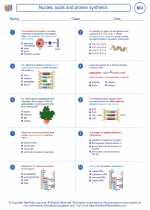
 Worksheet/Answer key
Worksheet/Answer key
 Worksheet/Answer key
Worksheet/Answer key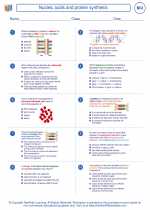
 Worksheet/Answer key
Worksheet/Answer key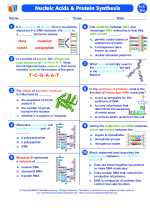
 Vocabulary/Answer key
Vocabulary/Answer key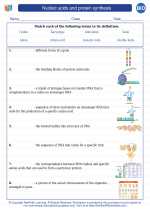
 Vocabulary/Answer key
Vocabulary/Answer key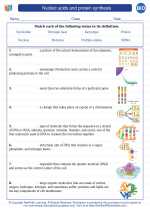
 Vocabulary/Answer key
Vocabulary/Answer key
